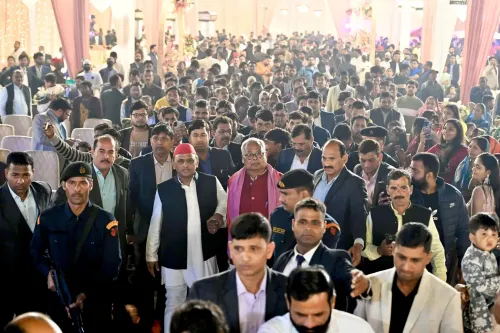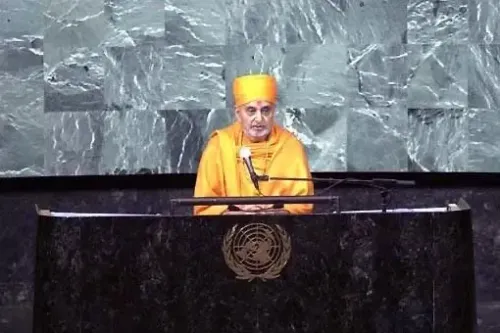Will India Resist Foreign Pressure to Open Its Dairy Market?

Synopsis
Key Takeaways
- India is firm against US dairy market demands.
- Opening the market could harm local farmers.
- The dairy sector is integral to India's economy.
- India's dairy is protected due to cultural and economic reasons.
- Cooperatives play a crucial role in supporting farmers.
New Delhi, Nov 22 (NationPress) India remains steadfast against US requests to open its dairy sector to foreign competition, with agricultural issues being contentious topics in ongoing bilateral trade discussions, even as negotiations approach a critical juncture.
Experts endorse the government's assertive position, reiterated by Commerce Minister Piyush Goyal.
“Allowing the import of dairy products would be detrimental,” remarked Tarun Shridhar, former Secretary of the Ministry of Fisheries, Animal Husbandry, and Dairying.
“Currently, we permit the import of specific milk-based proteins for medical reasons, typically on an individual basis,” added Shridhar, who has extensive experience in agriculture.
He shared an instance when a multinational company sought permission to import such proteins for infant nutrition, as there were reports of children experiencing wasting and stunting.
Stunting denotes hindered growth and development in children, while wasting indicates rapid weight and muscle loss.
Such requests generally receive favorable responses from officials. At present, New Delhi permits imports of lactose and albumins, including whey protein, to satisfy domestic demands.
The US ranks as the second-largest exporter of whey protein and third-largest supplier of lactose to India. Meanwhile, India applies tariffs ranging from 30% to 60% on imported dairy goods, while a substantial portion of its exports is directed at Washington.
The US views India’s dairy sector as one of the most shielded globally, while New Delhi defends its policies on the grounds of cultural practices and safeguarding millions of farmers.
“The dairy products from the US are entirely non-vegetarian,” noted Mohini Mohan Mishra, Secretary of the Bharatiya Kisan Sangh (BKS), referring to reports of American farmers supplementing cattle feed with animal products, such as dried blood powder and tallow.
“In India, dairy and dairy products are integral to a vegetarian diet; additionally, milk features in religious offerings, like panchamrit (a ceremonial mix of five ingredients, including milk and ghee),” Mishra emphasized.
He alleged that the US is attempting to coerce India into purchasing crops like soybean and American maize, alongside genetically modified organisms.
Other agricultural union leaders concur. “It appears India may be pressured into acquiring US products, including soybean, maize, wheat, and certain dairy items like milk powder and increased amounts of heavy proteins. We vehemently oppose this initiative,” declared Rajan Kshirsagar of the All India Kisan Sabha, affiliated with the CPI.
“If this occurs, we will initiate a nationwide protest,” he warned.
Since the White Revolution of 1970, India has become a global leader in milk production. Thousands of cooperatives have been formed, assisting farmers in enhancing their earnings with adequate logistical support. The movement gained further momentum last year with the introduction of White Revolution 2.0, aimed at modernization and cross-breeding cattle for increased yield.
India accounts for nearly a quarter of the global dairy supply, with dairy being the most significant agricultural product, contributing 5% to the national economy and directly employing over 8 crore farmers.
Official reports indicate that milk production surged by 63.56% over the past decade, rising from 146.3 million tonnes to 239.30 million tonnes, with per capita availability increasing by 48%.
“Our dairy sector thrives due to this cooperative model,” reflected Shridhar. “We guarantee procurement prices to support cooperative networks, ensuring even private buyers must adhere to stipulated rates for farmers,” he added.
In July, research from the RBI indicated that if India’s dairy market is opened, milk prices might fall by at least 15%, potentially leading to an annual loss of Rs. 1.03 lakh crore for dairy farmers. Therefore, considering all aspects, New Delhi cannot afford any concessions regarding dairy products, as summed up by Shridhar.









